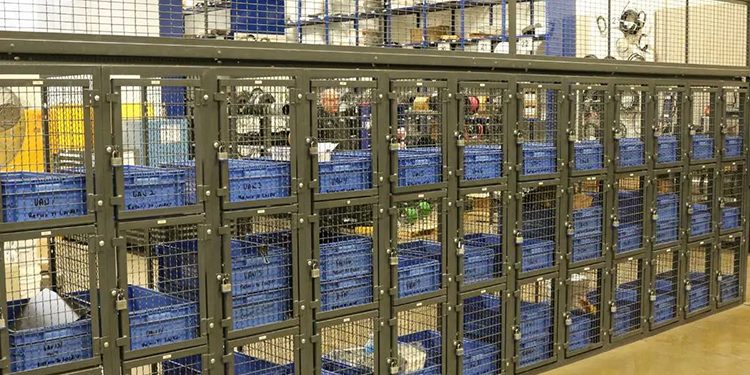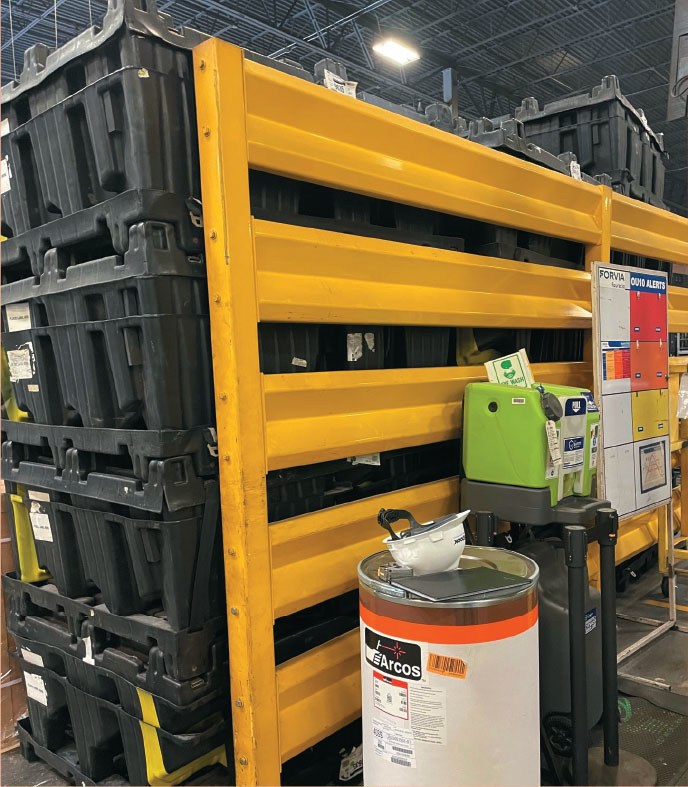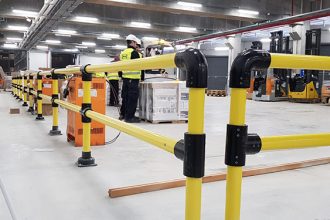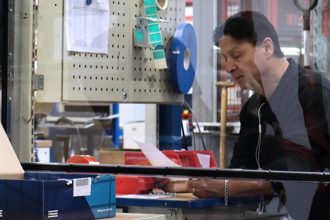Sort Through Protective Guarding Solutions with ProGMA’s Help

A recent article in MHI Solutions magazine explored how protective guarding creates and maintains safe environments in a variety of industrial settings. These essential tools help protect not only workers, but also equipment, products, and facilities. Because protective guarding is vital, users need to have the utmost confidence that the solutions they choose are up to the tasks at hand. That’s why the Protective Guarding Manufacturers Association (ProGMA) of MHI works diligently to help industrial facility operators navigate the available solutions.
ProGMA’s membership includes leading suppliers and manufacturers of protective guarding solutions. The association offers a variety of resources to inform those who run warehouses, distribution centers, and other facilities about the options. These tools also help buyers identify the ones that best fit their unique needs.
ProGMA Resources Help Identify Equipment Options
Among ProGMA’s resources is a protective guarding equipment search tool. ProGMA also produces videos, case studies, and blog posts that delve into the nuances of protective guarding and its many applications in the field. Additionally, there are resources for analyzing the financial value of different guarding tools. The group also offers insights for continuous evaluation of guarding strategies to ensure the best and safest conditions possible.
“There are multiple protective guarding solutions available to protect employees from the risk of a workplace injury,” noted Ken Parrott, director of business development at MHI member Impact Recovery Systems. Parrot currently serves as Chair of ProGMA.

“Often, several different options exist to safeguard workers from dangerous interactions with equipment, machinery, or other hazards,” he said. “It can be challenging for operations managers to determine the ideal solution.”
The search tool, for instance, covers everything from bollards and column protectors to conveyor guarding and dock‑lift gates. It captures nearly 40 different types of equipment options. The tool not only shares different solutions but also gives detailed explanations for how they are used. For maximum user‑friendliness, the search function allows users to enter what the guarding will protect. It then displays a selection of product descriptions, images, and manufacturers for consideration.
“By using the tool to search based on the application, a diverse range of protective guarding options appears,” Parrott said. “So, whether you need to protect a rack, a doorway, or a robotic cell, for example, the tool will quickly display the different types of protective guarding equipment that would work.”
Protective Guarding Solutions Adapt to Trends
The range of protective guarding deployments is always expanding and evolving to meet new trends and uses. Therefore, ProGMA’s resources help users track these offerings and applications.
For instance, among the notable retail consumer developments in recent years is the buy‑online‑pickup‑in‑store trend. However, the trend extends beyond retail. In fact, some business‑to‑business customers now pick up their purchases directly at warehouses. For warehouse operators who offer that option, it is essential to create a secure way to store items awaiting pick up. Self‑serve industrial lockers made with wire mesh panels are an effective option.
The lockers sit in designated areas in an industrial facility with controlled access. Customers and carriers can access the lockers with or without assistance from employees. Wire mesh panels offer a steel frame and steel wire mesh with small openings. This provides visibility and security. Alternately, solid metal panels keep the items in each locker hidden. The lockers just one application for wire mesh panels. This type of guarding also serves to secure the perimeter of powered equipment or machinery, and keeps items from falling off industrial pallet racks.

ProGMA Standards Ensure Consistent Product Testing
ProGMA’s online resources also explain the standards developed by the group to maintain consistency among manufacturers in product testing. Uniform testing gives end users a way to compare apples to apples when evaluating different options. The group established standards for:
- Steel mesh containment panels used in vertical storage system applications.
- Crash testing methods for industrial guardrail barriers and barrier posts.
- Test methods for topple barriers.
Standardization backed by rigorous testing gives assurance to consumers that solutions will be up to the required tasks, such as in the case of the standards for crash testing guardrail barriers and barrier posts. Those tests rely on a surrogate standardized test vehicle to play the role of the kind of powered industrial truck potentially used in a facility. Thorough test reports include a detailed explanation of any damage and deflection experienced by the equipment, along with data, charts and photographs. Each product then receives an impact rating that makes it easy for buyers of the equipment to gauge the protection it will provide.
Videos Depict Protective Guarding in Use
Meanwhile, Parrott said videos depicting protective guarding in use illuminate the advantages of different solutions in a compelling way. The videos help facility operators envision how they might deploy the systems in their own environments.
“People in general find videos more engaging,” he said. “That’s certainly been the case with the videos ProGMA has produced. Because they’re animations, we are able to depict accidents that are preventable with the use of different protective guarding solutions. They’re a little campy, but they reinforce the point.”
Visit the ProGMA website at mhi.org/progma to experience the group’s resources and to learn more about protective guarding solutions.



